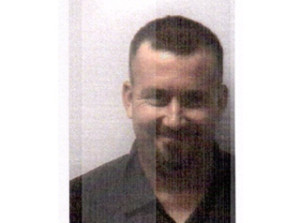
He next completed his Master of Arts degree in 1936, and his Doctor of Philosophy in 1941 at Harvard University. Samuelson felt there was a dissonance between neoclassical economics and the way the system seemed to behave he said Henry Simons and Frank Knight were a big influence on him. The lecture mentioned as the cause was on the British economist Thomas Malthus, who most famously studied population growth and its effects. He said he was born as an economist, at 8.00am on January 2, 1932, in the University of Chicago classroom.

He then studied at the University of Chicago and received his Bachelor of Arts degree there in 1935. In 1923, Samuelson moved to Chicago where he graduated from Hyde Park High School (now Hyde Park Career Academy). His family, he later said, was "made up of upwardly mobile Jewish immigrants from Poland who had prospered considerably in World War I, because Gary was a brand new steel-town when my family went there". Samuelson was born in Gary, Indiana, on May 15, 1915, to Frank Samuelson, a pharmacist, and Ella née Lipton. Samuelson worked in many theoretical fields, including: consumer theory welfare economics capital finance, particularly the efficient-market hypothesis public finance, particularly optimal allocation international economics, particularly the Balassa–Samuelson effect and the Heckscher–Ohlin model macroeconomics, particularly the overlapping generations model and market economics. Together with Henry Wallich, their 1967 columns earned the magazine a Gerald Loeb Special Award in 1968. By contrast, Friedman represented the monetarist perspective. Samuelson wrote a weekly column for Newsweek magazine along with Chicago School economist Milton Friedman, where they represented opposing sides: Samuelson, as a self described "Cafeteria Keynesian", claimed taking the Keynesian perspective but only accepting what he felt was good in it. Johnson, and was a consultant to the United States Treasury, the Bureau of the Budget and the President's Council of Economic Advisers. He served as an advisor to Presidents John F. Merton, Joseph Stiglitz, and Paul Krugman. He spent his career at MIT, where he was instrumental in turning its Department of Economics into a world-renowned institution by attracting other noted economists to join the faculty, including later winners of the Nobel Prize Robert Solow, Franco Modigliani, Robert C. In 1966, he was named Institute Professor, MIT's highest faculty honor.
#Paul bates full#
After graduating, he became an assistant professor of economics at Massachusetts Institute of Technology (MIT) when he was 25 years of age and a full professor at age 32. He entered the University of Chicago at age 16, during the depths of the Great Depression, and received his PhD in economics from Harvard. James Poterba, former head of MIT's Department of Economics, noted that by his book, Samuelson "leaves an immense legacy, as a researcher and a teacher, as one of the giants on whose shoulders every contemporary economist stands". It is now in its 19th edition, having sold nearly 4 million copies in 40 languages. It was the second American textbook that attempted to explain the principles of Keynesian economics. He was author of the best-selling economics textbook of all time: Economics: An Introductory Analysis, first published in 1948.

Samuelson considered mathematics to be the "natural language" for economists and contributed significantly to the mathematical foundations of economics with his book Foundations of Economic Analysis. In 1996, when he was awarded the National Medal of Science, considered to be America's top science-honor, President Bill Clinton commended Samuelson for his "fundamental contributions to economic science" for over 60 years. Samuelson was likely the most influential economist of the later half of the 20th century. Parker has called him the "Father of Modern Economics", and The New York Times considers him to be the "foremost academic economist of the 20th century". When awarding the prize in 1970, the Swedish Royal Academies stated that he "has done more than any other contemporary economist to raise the level of scientific analysis in economic theory". Paul Anthony Samuelson (– December 13, 2009) was an American economist, who was the first American to win the Nobel Memorial Prize in Economic Sciences.


 0 kommentar(er)
0 kommentar(er)
